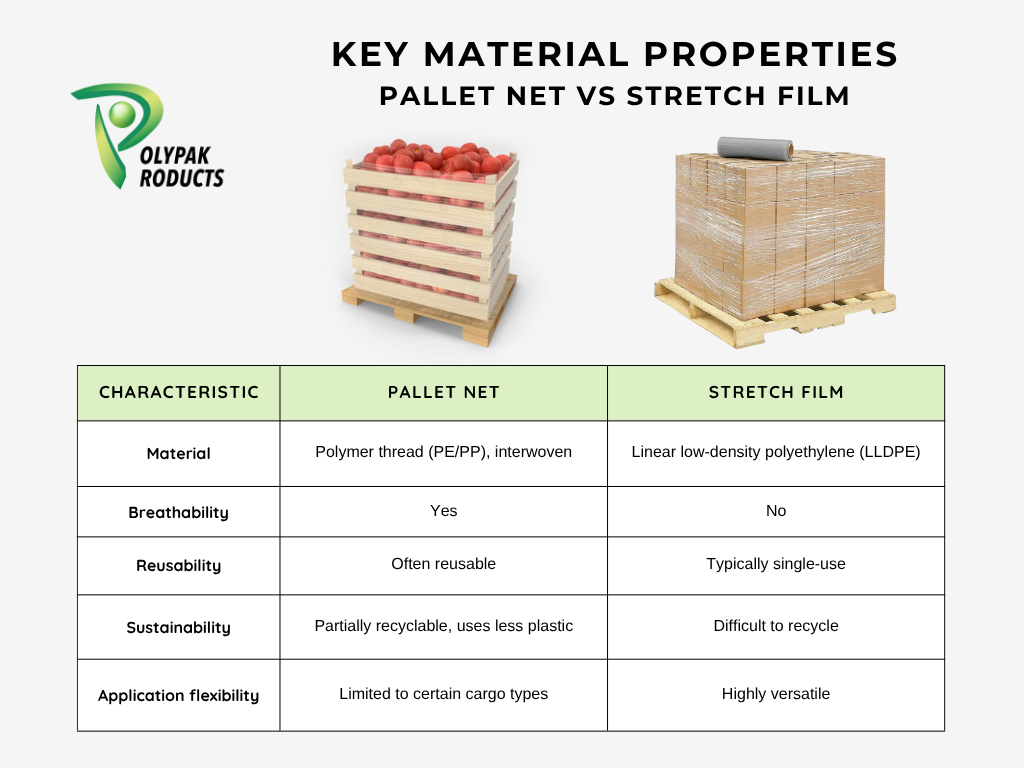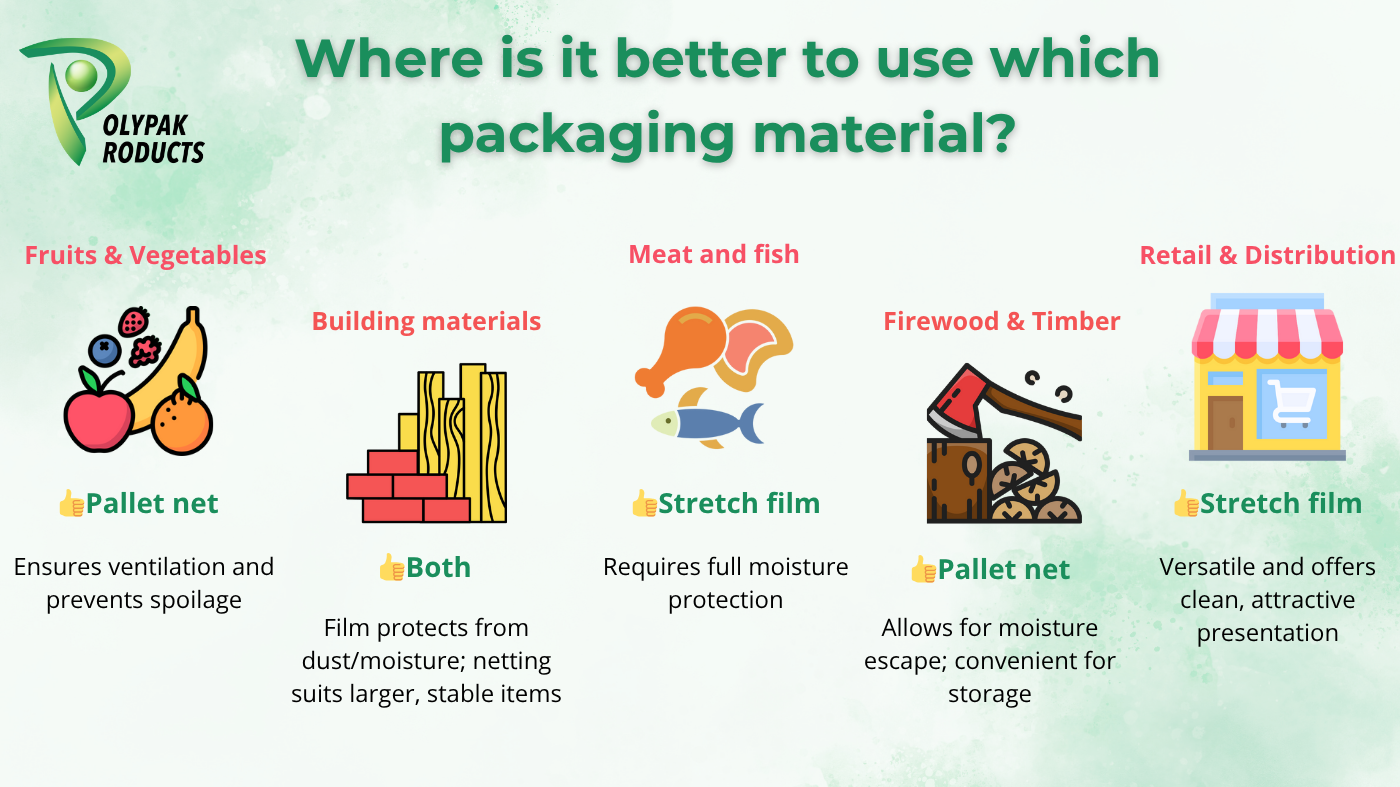
One of the most compelling arguments for pallet netting is its eco-friendliness. According to the European Environment Agency, packaging accounts for nearly 40% of total plastic waste in the EU. Because pallet nets are reusable in many cases and require less raw material, they contribute significantly to reducing the carbon footprint of logistics operations.
A key advantage of pallet netting is its breathability. This makes it especially suitable for transporting fresh produce, particularly in the agriculture and food sectors. Unlike stretch film, netting prevents moisture buildup and condensation, thus reducing the risk of mold and spoilage.
Although the upfront cost of pallet netting may be higher, its reusability and long lifespan offer long-term savings. This makes it a sound investment for operations focused on reducing packaging costs over time.
Stretch film typically provides tighter and more secure wrapping, which is beneficial for irregular or unstable loads. However, modern reinforced pallet nets have shown excellent resistance to tearing and deformation, making them a reliable alternative even under tension.


Choosing between pallet netting and stretch film should be based on your business’s specific logistics needs, cargo characteristics, and long-term cost objectives. For many producers — particularly in agriculture, food, and construction — pallet netting proves to be not only a cost-effective solution, but also a step toward sustainable and responsible logistics.
If your company aims to reduce costs, minimize plastic waste, and improve packaging performance, pallet netting might be the strategic packaging solution you’ve been looking for. For tailored recommendations, consult the specialists at Polypak, a trusted manufacturer of premium pallet nets for the European market.
2020 All Rights Reserved.
2020 All Rights Reserved.